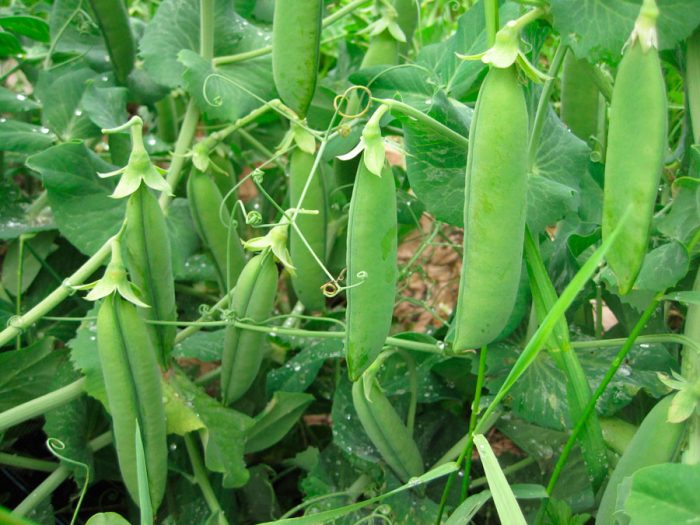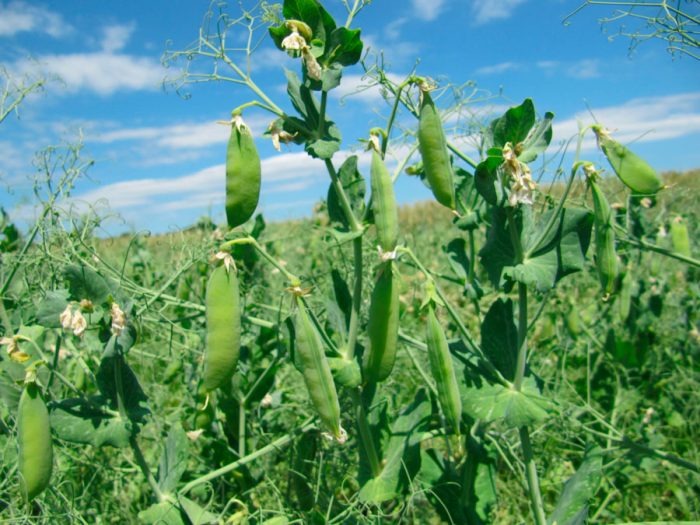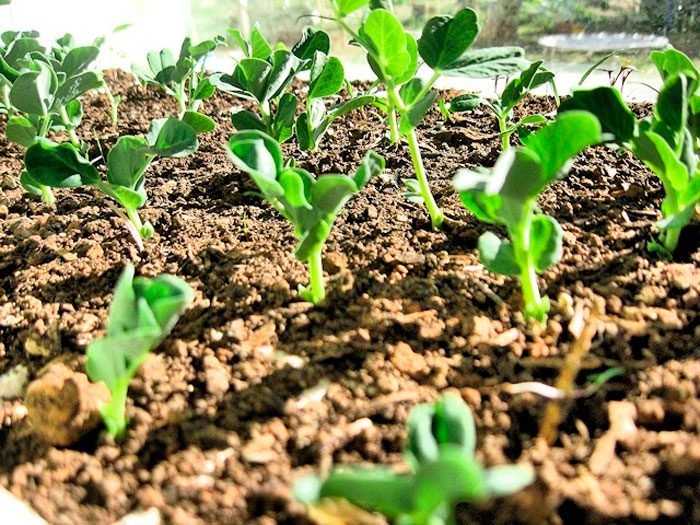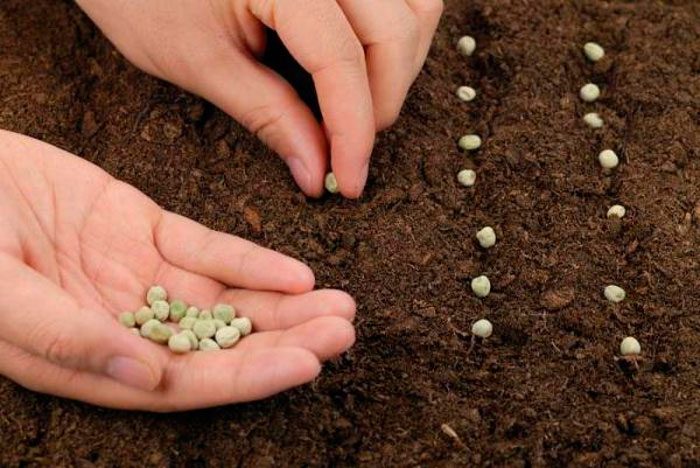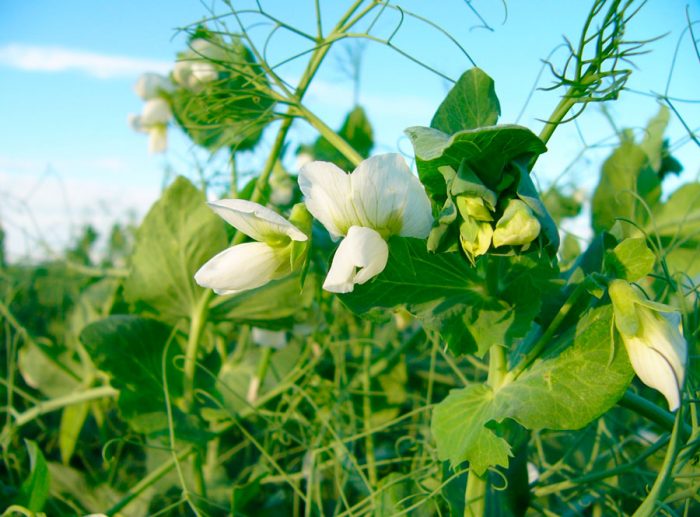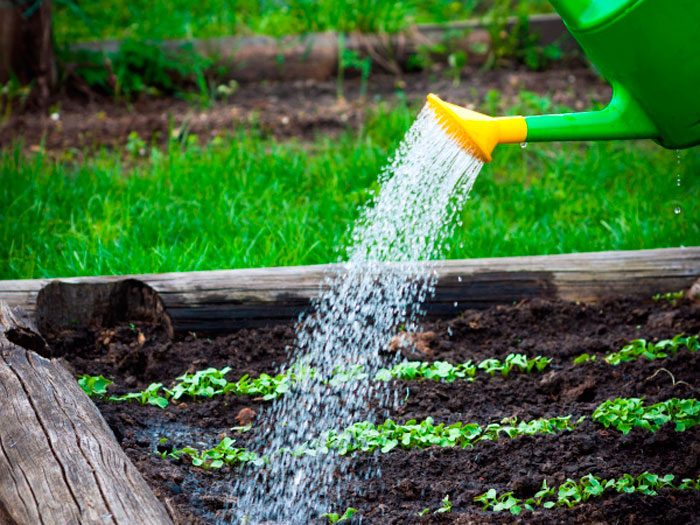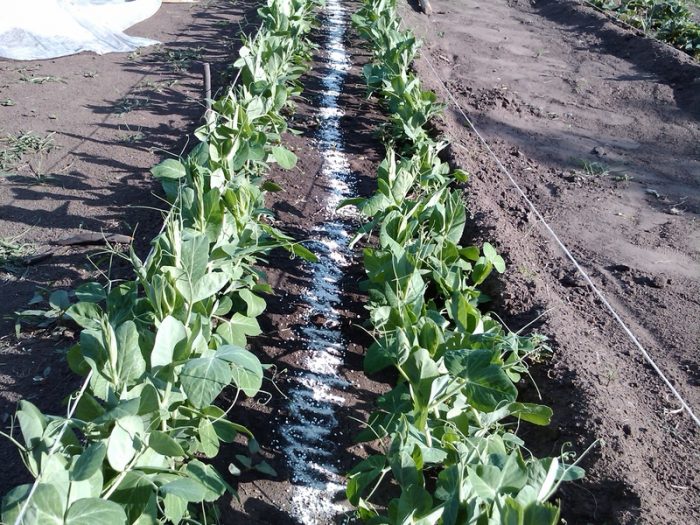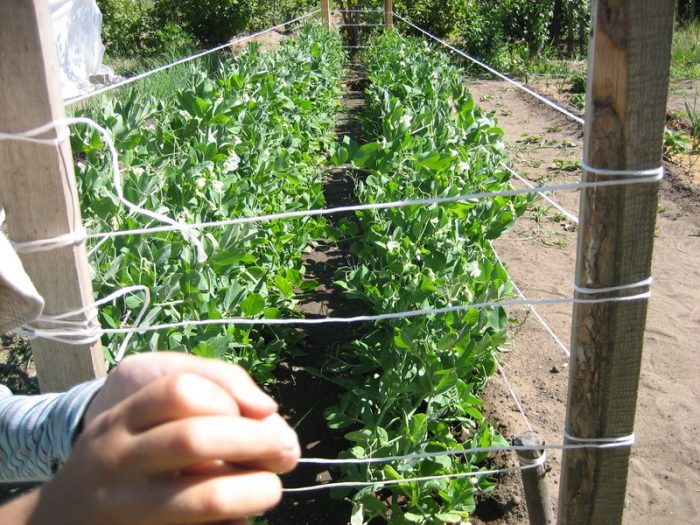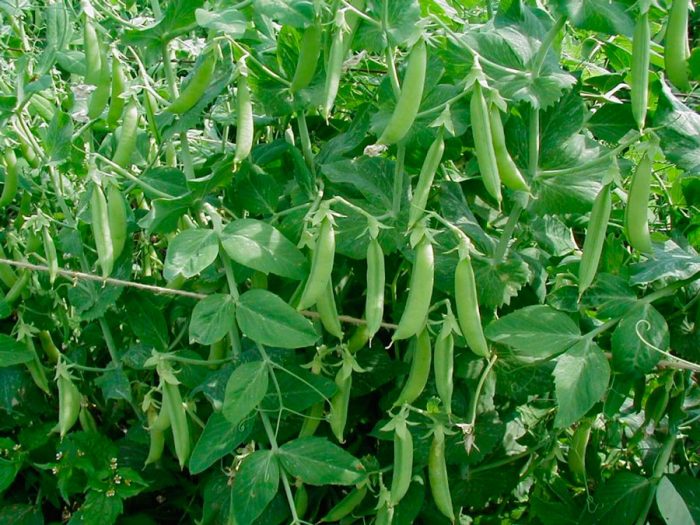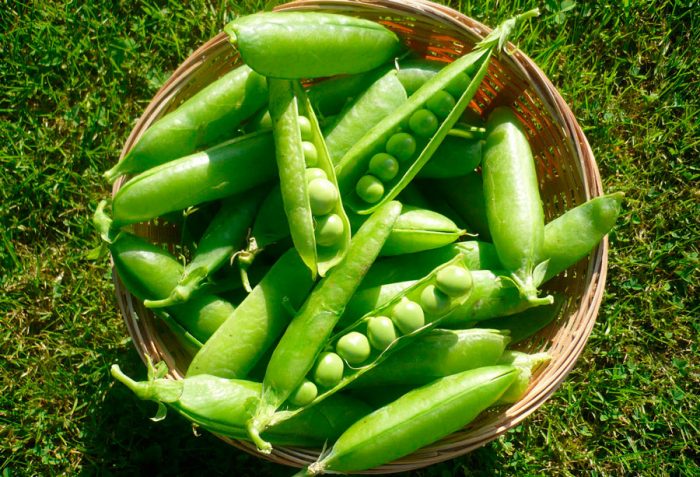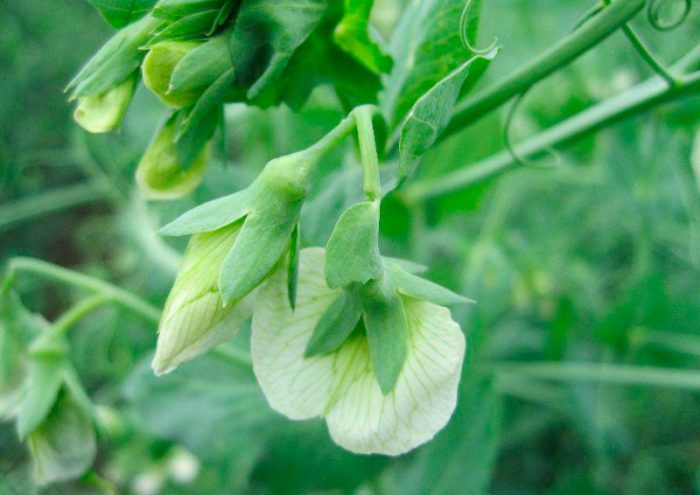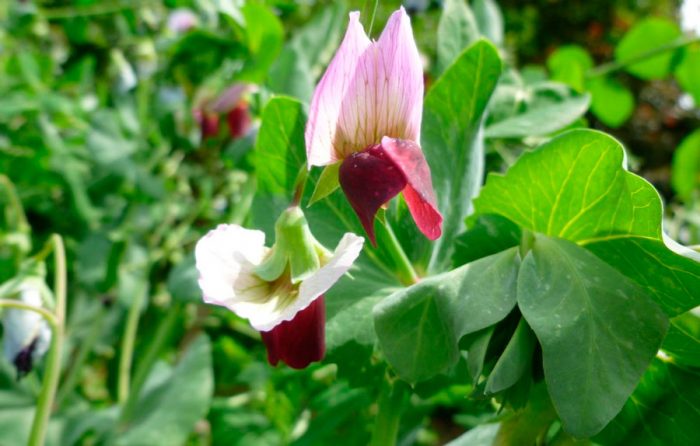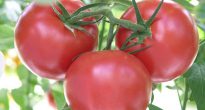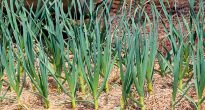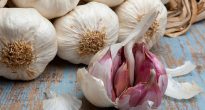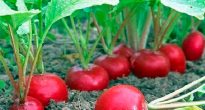The herbaceous pea (Pisum) is a member of the legume family. It comes from South-West Asia, where it was cultivated in ancient times. Green peas contain carotene (provitamin A), vitamin C, PP, B vitamins, as well as salts of manganese, phosphorus, potassium and iron. Peas also contain lysine, which is one of the most rare amino acids. Today, 3 varieties of this plant are cultivated, namely: grain peas, fodder and vegetable peas - this annual is self-pollinating and has a rapid development. This culture is popular not only because it is a source of vegetable protein and contains many substances useful for the human body, but also because it is an excellent green manure. Peas are an excellent precursor for all crops grown in the garden without exception.
Content
Pea features
Peas have a deep root system. The height of the branching hollow stem can reach up to 250 cm, which directly depends on the variety (standard or ordinary). Complicated pinnate leaf blades have petioles ending in tendrils. The plant clings to the support with them, which helps to keep the bush in an upright position. Bisexual self-pollinating flowers, as a rule, are painted white, but also purple. Pea flowering begins 30–55 days after sowing the seeds. In a bush of an early variety, pecking of the first peduncle is observed from the axils of 6–8 leaf plates, while in late-ripening varieties - from the axils of 12–24 leaves. 1 time in 1 or 2 days a new peduncle grows. The fruit is a pod that can have a different color, shape and size depending on the variety. There are 4-10 seeds inside the beans, which can be wrinkled or smooth. You should know that the peel of the pod and the seeds inside it have the same color.
Peas, like all other plants belonging to the legume family, contributes to the enrichment of the soil with nitrogen. During the growth of the bushes on their root system, the development of beneficial microorganisms is observed. This bacteria fixes nitrogen, which they assimilate from the air.
Planting peas in open ground
What time to plant
Peas are a rather demanding crop to care for. However, if you adhere to all the agrotechnical rules of this culture, it will be quite simple to grow peas. Sowing seeds in open soil should be carried out in the last days of April (from about the twentieth day), after the snow cover has completely melted and the soil dries out slightly. The seedlings that have appeared grow well and do not die even with a not very large frost. If the variety is early ripening, then the sowing of seeds can be carried out from spring to the end of the first decade of July. Experienced gardeners recommend sowing the seeds of this crop in open soil several times from the last days of April to the first - July, while a distance of 1.5 weeks should be maintained between crops.
Seeds need pre-sowing preparation. To do this, they need to be warmed up for 5 minutes in a hot (about 40 degrees) solution of boric acid; for its preparation, you need to mix 1 bucket of water with 2 grams of acid. As a result, the plant becomes more resistant to harmful insects and diseases, for example, to the nodule weevil larvae. When the seeds swell in the acid solution, they will need to be thoroughly dried. If you suddenly did not manage to wet the seeds before sowing, then they can be sown dry in open ground, after a few hours they will swell right in the soil.
Suitable land
For the cultivation of this crop in open soil to be successful, for this you will need to familiarize yourself with several rules and adhere to them:
- The site must be well lit.
- Groundwater must lie deep enough, otherwise the root system of the bushes, which goes 100 centimeters deep into the soil, can be significantly affected.
- A light soil rich in nutrients is ideal for peas, with a pH of 6-7. When grown in acidic soil, the bushes will be weakened and sick.
Poor soil is not suitable for growing such a crop, and even one in which there is a large amount of readily available nitrogen. There are gardeners who sow peas directly into the trunk circle of a young apple tree. The crown of a young tree is just beginning to develop, so the sun is enough for the peas. The peas themselves contribute to the enrichment of the soil with nitrogen, which has a very good effect on the growth and development of the apple tree. If you want to resort to this method of growing peas, then a layer of nutrient soil with a thickness of 10 to 12 centimeters must be poured into the tree trunk circle.
Experts advise preparing the soil for sowing such a crop in advance. To do this, in the autumn, the site must be digged, while 50 to 60 grams of superphosphate and from 20 to 30 grams of potassium salt per 1 square meter should be added to the soil. If the soil on the site is acidic, then this can be corrected by introducing wood ash into it, while per 1 square meter of the site is taken from 0.2 to 0.4 kg, the final amount of ash depends on the value of the acid index. With the onset of the next spring period, saltpeter should be added to the soil (10 grams per 1 square meter). It must be remembered that this crop reacts extremely negatively to the introduction of fresh manure into the soil, but it grows well on the land that was manured when other plants were grown on it. The best predecessors of such a crop are potatoes, cucumber, tomatoes, cabbage, and pumpkin. And it is not recommended to sow it in those areas where beans, lentils, peas, beans, soybeans and peanuts were grown before it.
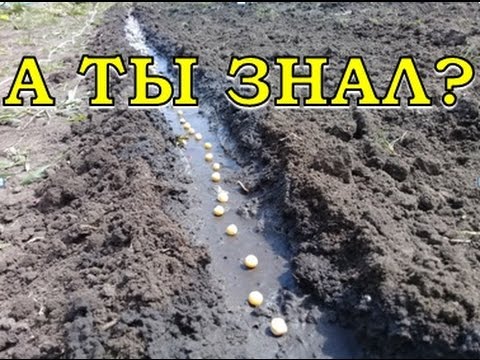

Watch this video on YouTube
Landing rules
Seeds are sown in grooves 50 to 70 mm deep and 15 to 20 centimeters wide, which must first be done in the garden bed. The distance between the grooves should be equal to 0.5–0.6 m. Mix the compost with wood ash and pour the resulting mixture into the grooves, the formed layer should be sprinkled on top with garden soil.After that, the depth of the grooves in a bed with heavy soil should remain about 30 mm, and with light soil - about 50 mm. During sowing, 15 to 17 seeds should go per 1 m of the furrow. For this, a distance of approximately 60 mm should be maintained between the seeds. After the grooves are covered with soil, the surface of the garden bed must be thoroughly tamped, which will help to retain moisture in it. The bed must be protected from birds that can pull the peas out of the ground. To do this, they should be covered from above with a fishing net or a transparent film. The first seedlings should appear after 7-10 days. Between the rows on the bed with peas, you can sow a salad or radish.
Pea care
Germination of pea seeds begins already at an air temperature of 4 to 7 degrees, but this process is best of all at 10 degrees. It should be borne in mind that such a culture reacts extremely negatively to the heat, and if it is sown on a sultry day, then it is highly likely that the grown plants will not bloom.
The peas must be properly watered, after which the soil surface in the garden bed must be loosened, and weeds must be removed. The first time it is necessary to loosen the surface of the garden bed after half a month after the seedlings appear, while the plant will need to be spud. After the height of the bushes is 0.2–0.25 m, supports should be installed along the row, along which the plants will climb up.
In order for the crop to be more abundant, the tops of the shoots should be pinched and this should be done as early as possible, after which several lateral shoots will begin to grow in the bushes. After some time, you can also pinch them. It is recommended to pinch the bushes early in the morning on a fine day, in this case, the wounds can dry well until the evening. There is a possibility that harmful insects can settle on the bushes or they can be struck by a disease, so you need to be prepared to immediately start treating the plants.
How to water
This crop reacts extremely negatively to high air temperatures, which is why during a prolonged drought, the frequency and abundance of watering must be increased. Particular attention should be paid to watering at a time when flowers bloom on the bushes. Before flowering, you need to water the garden about 1 time in 7 days. When the peas will bloom, as well as during the formation of fruits, the frequency of watering is increased twice every 7 days. On hot days, peas should also be watered a couple of times a week, while 9 to 10 liters of water are taken per 1 square meter of the plot. When the bushes are watered, the surface of the soil must be loosened, while removing all the weeds.
Fertilizer
It is recommended to feed peas together with watering. Before you start watering, you need to pour 1 tbsp into 1 bucket of water. l. nitroammofoski and mix everything well, this solution should be used for watering 1 square meter of planting. You can replace the nitroammophos with a mullein solution. Humus and compost, as well as phosphorus-potassium fertilizers, should be applied to the soil first before the bushes bloom, and then after the flowering is over, and the last time this is done in autumn during the treatment of the site. The introduction of nitrogen-containing fertilizers into the soil is carried out in the spring.
Garter
In pea bushes, the shoots are rather weak, and therefore, in the process of fruit formation, they lodge under the weight of the pods, in this regard, they simply need a garter to a support. This support can be made of metal rods or pegs, which should be installed by sticking them into the ground along the row, while keeping a distance of 50 cm between them.You must pull a rope or wire on them, while it should be placed horizontally. The stems of plants that have antennae must be guided along this support, in this case they will receive a sufficient amount of sunlight and be blown by the wind.If the support is not installed, then the bushes will fall and begin to rot from dampness and lack of light.
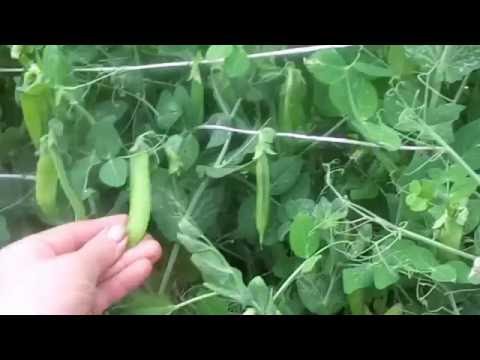

Watch this video on YouTube
Pests and diseases of peas
Pests
Such harmful insects as leafworm, pea moth, or garden and cabbage scoops can settle on pea bushes. Leafworms and scoops lay eggs on the leaf plates of the plant. The larvae of the leafworm eat the foliage, while wrapping themselves in it, and the caterpillars of the scoop gnaw the parts of the bush located above the ground. At the same time, moth butterflies arrange their egg-laying on the surface of foliage, fruits and flowers, and after 7 days larvae appear, which begin to actively devour peas.
Diseases
The greatest danger to peas is represented by diseases such as powdery mildew and mosaic. Mosaic is a viral disease; today there is no effective drug for its treatment. For the purpose of prevention, one must not forget about the rules of crop rotation and agrotechnics of this culture, and it is also necessary to carry out pre-sowing seed preparation. In the affected bushes, growth initially slows down and leaves curl appear, and denticles form on their edges. After some time, necrotic spots appear on the leaf plates, while the veins lose their color.
Spheroteka (powdery mildew) is a fungal disease. A loose, whitish bloom forms on the surface of the aboveground part of the infected plant, first it appears on the lower part of the bush, and then completely covers it. As the disease progresses, fruit cracking and death is observed, while the infected stems and foliage turn black and die off.
Pea processing
If the peas are affected by the mosaic, then all diseased bushes are removed from the soil and destroyed. The site itself must be shed with a sufficiently strong solution of manganese potassium. It is forbidden to grow anything on this site for at least 1 year. To combat powdery mildew, various fungicidal preparations are used, for example: Topaz, Fundazol, Quadris, Topsin or Skor. If desired, you can use folk remedies in the fight against this disease, for example:
- One bucket of water is mixed with 40 grams of laundry soap crushed on a grater and the same amount of soda ash. With such a solution, it will be necessary to treat the affected bushes 2 times with a break of 7 days.
- 10 liters of water must be combined with 0.3 kg of sow thistle foliage. The composition must be allowed to brew for one night. With a strained infusion, it is necessary to process the bushes 2 times with a break a week.
- It is necessary to fill the bucket half with weeds, after which it is filled to the top with hot water. The infusion will be ready after a few days. The filtered agent is diluted with water (1:10), after which the affected bushes are treated with it.
It is necessary to spray the foliage in the evening, otherwise sunburn may appear in the place of the formed droplets. To get rid of the caterpillars of leaf rollers, scoops and moths, it is necessary to spray the plants with infusion of garlic or tomato tops. To make a tomato infusion, you need to mix 3 kg of finely chopped tops with a bucket of water, the product will be ready after 1–2 days. The strained infusion will need to be sprayed with pea foliage. 20 grams of garlic, minced with a garlic press, are combined with 1 bucket of water. The product will be ready after 24 hours, after which it is filtered and used to treat plants. These infusions will help get rid of aphids.
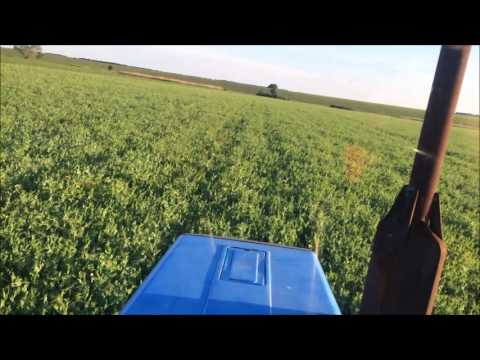

Watch this video on YouTube
Peas harvesting and storage
About 30 days after the plant has finished flowering, you can start harvesting. The duration of fruiting of this culture is from 35 to 40 days. Such a plant is multi-harvest, so its fruits are harvested every 2-3 days. Fruits located in the lower part of the bush ripen first. Within one season from 1 m2 the beds can be removed about 4 kg of fruit, but this is only under favorable conditions.
Most often, gardeners cultivate peeling and sugar varieties of this plant. An important difference between sugar peas and shelling peas is that they do not have a parchment layer in the pods; therefore, young fruits, if desired, can be eaten with the pod. Harvesting of delicate plant pods of this variety is carried out as the technical maturity is reached, starting from the second half of June. In order for the bushes to begin flowering again in August, and they give a second harvest, it is necessary to systematically pluck all the pods from the plants to one. Harvesting is carried out extremely carefully so as not to injure delicate shoots.
The collection of the fruits of the peeling varieties is carried out from the last days of June to autumn as they ripen. Since this variety is grown to obtain green peas, the fruits must be removed while they are still smooth and have a uniform color. Mesh pods can only be used for grain.
Green peas, in fact, are unripe, and experts say that the fruits are in the stage of technical maturity. It cannot be kept fresh for a long time, so it is either frozen or canned. There is another way to preserve the harvested crop. To do this, pour the peas into hot water and let it boil for 2 minutes. Then it is thrown into a colander and rinsed with very cold water. After that, it must be put in a drying oven heated to 45 degrees, where it must stay for 10 minutes. The pulled peas must be cooled at room temperature for 1.5 hours, after which they are again removed to the dryer heated to 60 degrees. Peas, if desired, can be dried in the oven on a baking sheet, but in this case you will need to add sugar. When the peas are cooked, they will turn dark green in color, and their surface will become wrinkled. It can be stored for quite a long time. Biologically mature peas can be stored for several years if done correctly:
- fruits must be fully ripe;
- before storing, the peas are thoroughly dried;
- for storage it is placed in a place where insects do not have access.
Before storing peas, they should be husked and dried in a well-ventilated room for 2-3 days, while sprinkling them on clean paper sheets. Cloth, paper or plastic bags are not suitable for storing ready-made peas, since insects penetrate into them easily. Experts recommend using glass jars with metal twist lids for storing peas. The fact is that caps made of nylon will not be able to reliably protect it from pests.
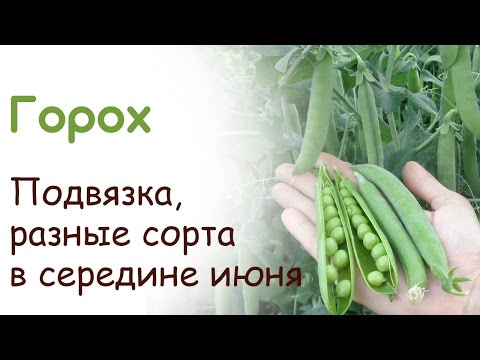

Watch this video on YouTube
Types and varieties of peas
There is a type of vegetable or sowing pea (Pistum sativus), it is distinguished by its genetic diversity. Its subspecies differ from each other in flowers, foliage, seeds and fruits. However, this classification is of interest only to specialists. For gardeners, an important division of pea varieties is in terms of ripening: late, medium and early ripening. Also, the varieties are divided according to their intended purpose; their description will be given below.
Peeling (Pisum sativum convar.Sativum)
The seeds of such plants are smooth, they contain a large amount of starch, but relatively little free sugars. The best varieties of this type include the following:
- Dakota... The early ripening variety is distinguished by its resistance to diseases and productivity. The peas are large.
- Vegetable miracle... A medium-ripening variety with disease resistance. The pods are about 10-11 centimeters long, the peas have excellent taste, they can be preserved and eaten fresh.
- Dinga... This early maturing variety was created by German breeders. The length of the slightly curved pods is from 10 to 11 centimeters, they contain 9–11 peas of a dark green color. They can be canned or eaten fresh.
- Somerwood... This medium-late coarse-grained variety is distinguished by its yield and disease resistance. The pod is 8 to 10 centimeters long and contains 6–10 seeds.
- Jof... This medium late variety is disease resistant. The pods are 8 to 9 centimeters long and contain sweet peas.
- Bingo... This late variety has a high yield and disease resistance. In beans, on average, there are 8 peas, which are distinguished by high taste.
Brain (Pisum sativum convar.medullare)
At the stage of biological ripeness, the peas of such varieties become shriveled, but it is recommended to use them at the stage of technical ripeness. The peas contain a large amount of sugar; therefore, they are canned and used for freezing. The most popular varieties:
- Alpha... This is the earliest variety that is bushy (not lodging). The growing season lasts about 55 days. The beans have a slightly curved saber shape with a sharp tip. The pods are about 9 centimeters long, they contain 5-9 peas, and they have a high taste.
- Telephone... This late-ripening amateur variety has a high yield and very long shoots (height about 300 cm). The pods are 11 centimeters long, they contain from 7 to 9 sweet large green peas.
- Adagumsky... This is a mid-season variety. Ripe peas are green-yellow in color and have excellent taste.
- Vera... This early maturing variety has a high yield. The pods are 6–9 centimeters long and contain 6 to 10 seeds.
Sugar (Pisum sativum convar.axiphium)
These varieties have very wrinkled and small peas. The pods do not have a layer of parchment, so the peas can be eaten with the pod. Popular varieties:
- Ambrosia... This variety is early maturing. The bushes need support.
- Zhegalova 112... This mid-season variety has a high yield. The length of slightly curved or straight pods is 10-15 centimeters, the apex is obtuse. Inside them are from 5 to 7 tender and sweet peas.
- Sugar Oregon... Medium early variety. The beans are about 10 centimeters long and contain from 5 to 7 peas.
- Miracle of Calvedon... This early maturing variety has a high yield. The length of the beans is from 6 to 8 centimeters, they contain 7 or 8 smooth large seeds of a dark green color.
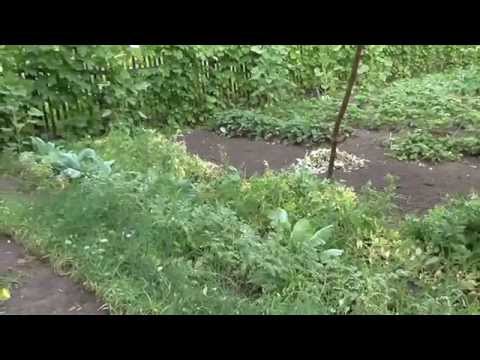

Watch this video on YouTube

